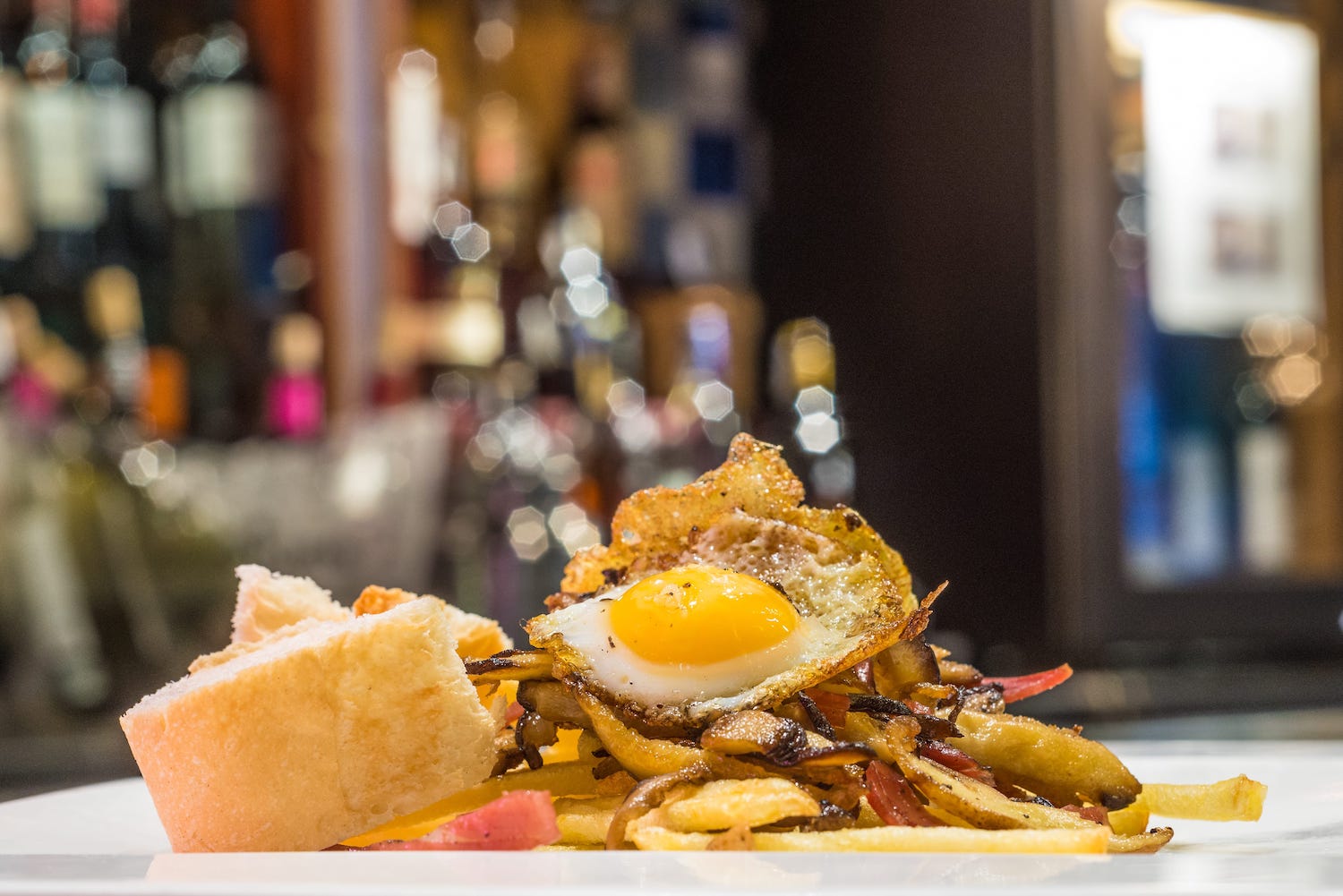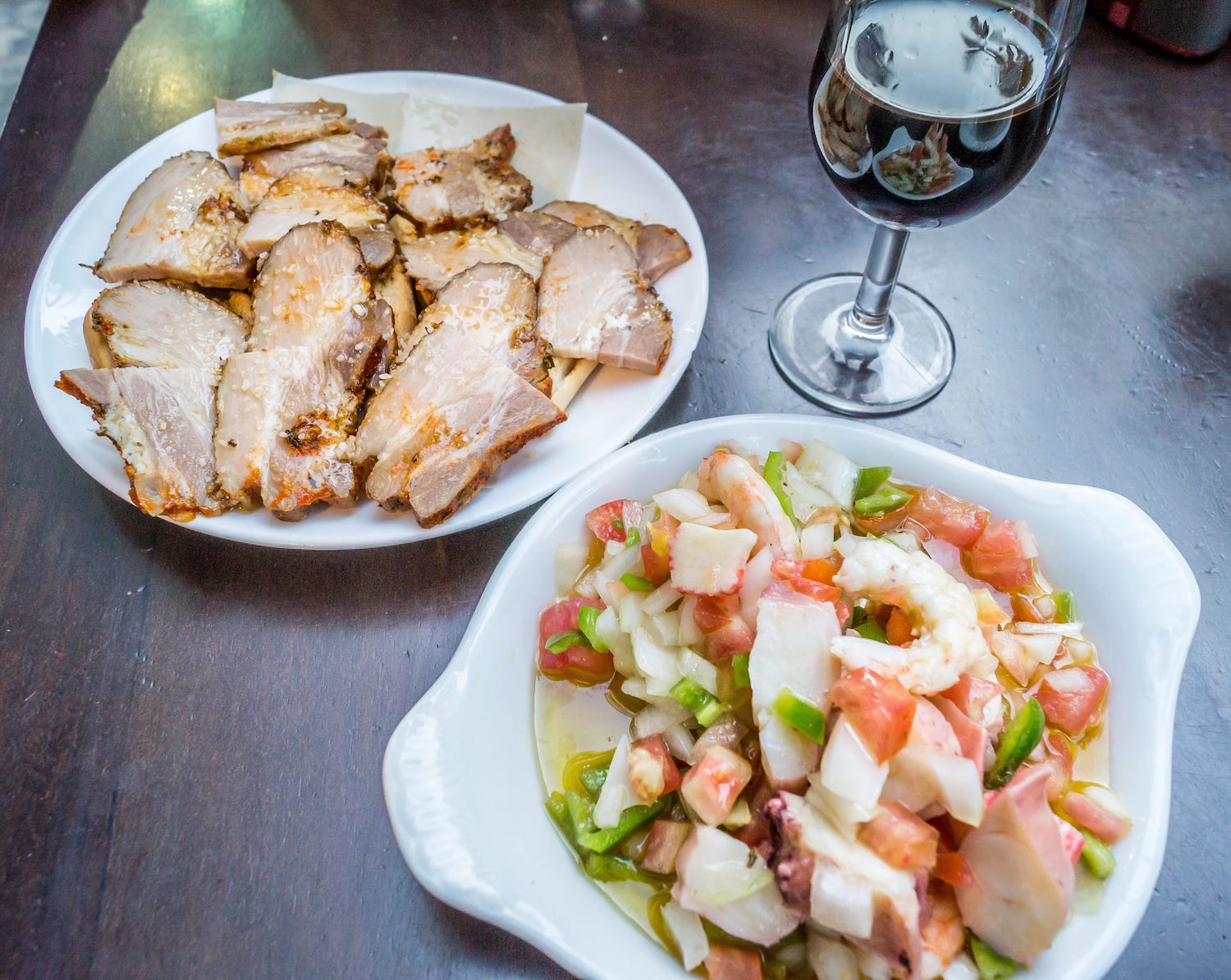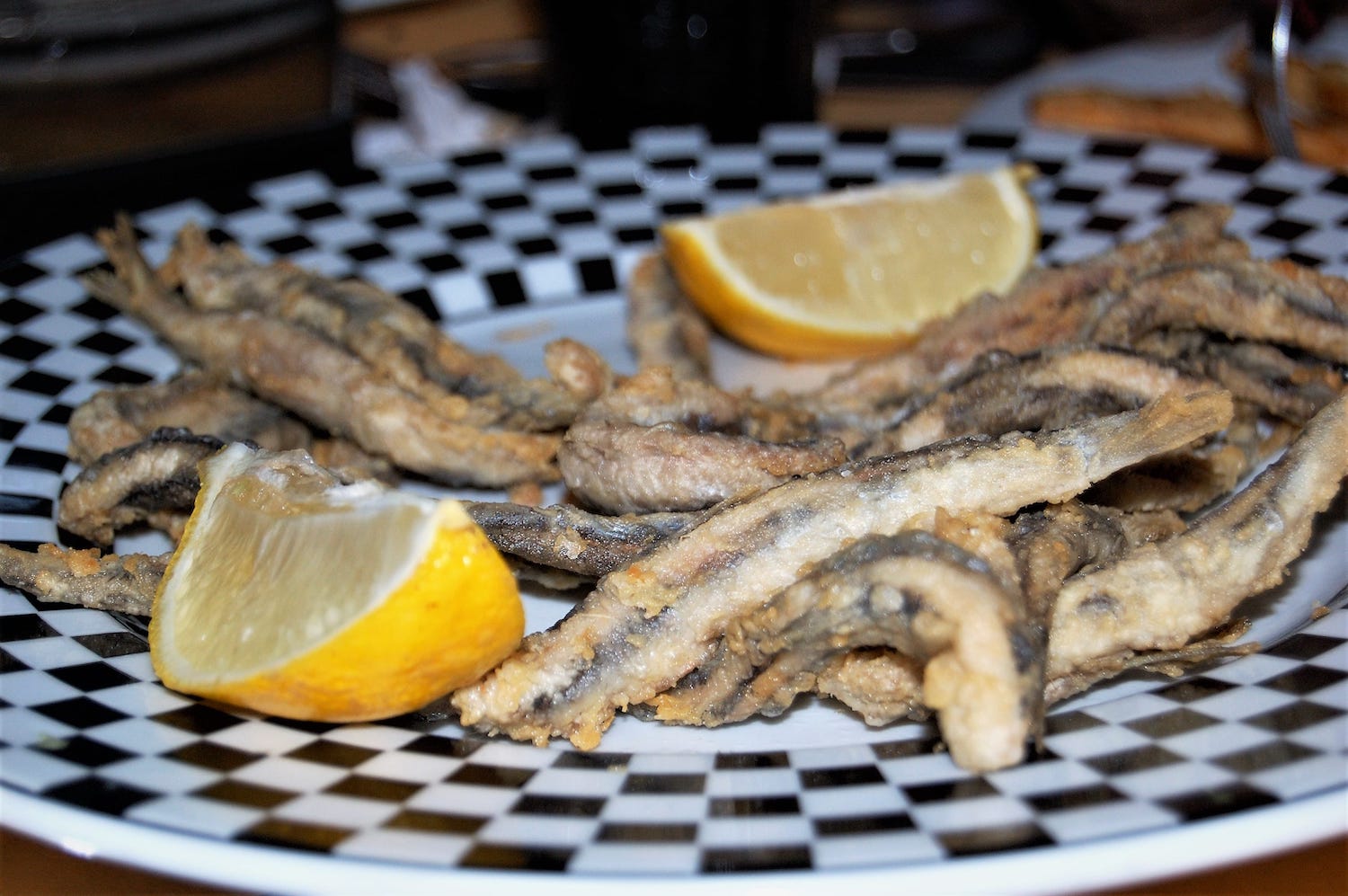Let's talk tapas

Everybody has heard of tapas bars, most of us have eaten in them, they’re ubiquitous in many European countries. But what exactly is tapas? And where does it come from?
According to the Real Academia Española, voice of authority on the Spanish language, a tapa, in this context, is a small portion of food served as an accompaniment to a drink, usually alcoholic, such as wine or beer. But where does the custom come from?
The origin is debatable. There are many versions as to how the custom started. Let’s look at a few of them. Before we do though, we should examine the meaning of the word tapa.
tapa = a cover (tapas is the plural)
tapar = to cover
tapear (a more recent creation!) = to visit bars to drink and enjoy their tapas
A royal connection
So the meaning, without any doubt, is some sort of cover. One of the best known origin theories dates back to the 13th century, when Alfonso the Wise was drinking wine, as prescribed by his doctor, and the wine came accompanied by small bites, in order to lessen the effects of alcohol. He liked the idea so much that, after recovering, he ordered that the inns of Castile should serve a solid bite with each glass of wine. Another theory relates that when the king passed by a tavern in San Fernando, which was buzzing with flies, he asked the barman to cover his wineglass to prevent the flies, getting in. The enterprising barman placed a slice of ham or a piece of cheese on top of the glass and said Here's the tapa, your majesty.
Now, not only did the king appreciate the cover, he also appreciated the small morsel of food that went with the wine. And that apparently, is the origin. It is said also that on the coast, a piece of ham across the top of the wineglass prevented sand getting into the wine when it was blown off the beach. A similar theory relates to the monarch Philip II. Legend has it that when he visited the Escorial monastery, he stopped at taverns along the way, and wanting to please his majesty, the innkeepers would have a jug of wine ready which they would cover with a thick slice of Serrano ham to prevent dust entering into the jar.
All of the remaining theories about the origins have the tapas relate to covering the wine in some circumstance or other, apart from one, which is that workers in the fields needed sustenance in the middle of the morning to allow them to get to lunch-time without getting tired. However, it seems likely that because there are so many versions of the tapa as cover stories that this is the probable origin.

What tapas is not
It is not a ration of food. Outside of Spain, and possibly outside of Andalucia, tapas bars serve small portions of food and charge for them. In Andalucia, particularly in Granada, tapas is free. A drink is ordered, and soon after it arrives, the barman places a plate of food, a tapas, on a plate. These are no longer placed on top of the glass but laid alongside on the counter or tabletop. You will frequently hear people barmen shouting out two number ones, or four number twos. This is an instruction to the kitchen to prepare two number one tapas, and four number two tapas. You might hear number three, or number four but most bars won't go beyond that. They are are all the different tapas so that if you stay in the bar long enough to drink four beers or glasses of wine, you’ll be served a different snack with each. It keeps the customers happy, encouraging them to remain longer in the bar. For may Spanish people, especially in the warmer months, this will constitute their entire evening meal.
About ten years ago I was invited to go to a bar at lunch-time by a builder I knew who I had met by chance in the city centre. I ordered a glass of wine, he had a beer. A couple of minutes after our drinks had been served, the bar owner placed a side plate on the counter between us. It was a full serving of paella with two small spoons. It seemed a ridiculously generous portion to me. And the price, at that time, was one euro for each drink. I turned to the builder and said to him, this is just impossible, it is impossible for this to be profitable. He laughed. You don't understand, he said to me, because you come from a different culture. If this family, after paying their rent and after feeding themselves and coping with their necessities, has any money left over at the end of the month, they’re overjoyed. You come from a culture that views this as a business. To them it's not a business it’s their life and the older generation almost certainly lived through the Years of Hunger.
It was a sobering thought and an interesting comment on the cultural differences between where I was brought up, in England, and a Spain which had only been forty years out of a dictatorship and only seventy years from the years of hunger, as they're known when people starved to death, something inconceivable for citizens of the wealthier, northern part of the continent.
Don't always expect something so nourishing
Tapas aren't always as exotic as in the images I have used. They can be as simple as a dish of olives crushed by hand by the owner's mother or even grandmother. Before the harvested olives are soaked in brine they are most often smashed to split one side open which enables a better absorption of the water. Why are they soaked in brine? To rid the olive of a fairly bitter taste when eaten fresh off the tree. For best results the brine needs to be changed regularly until the olives have lost all of that bitterness.
Some bars will offer a small dish of peanuts or a strange mixture of peanuts and tiny children's sweets, dolly mixtures, I seem to remember they are called.
However they come, the tapas is always welcome but if you are, like me, a fishetarian or vegetarian, be sure to ask for una tapita sin carne. Otherwise you might be unpleasantly surprised by the arrival of a dish of morcilla or chorizo!



